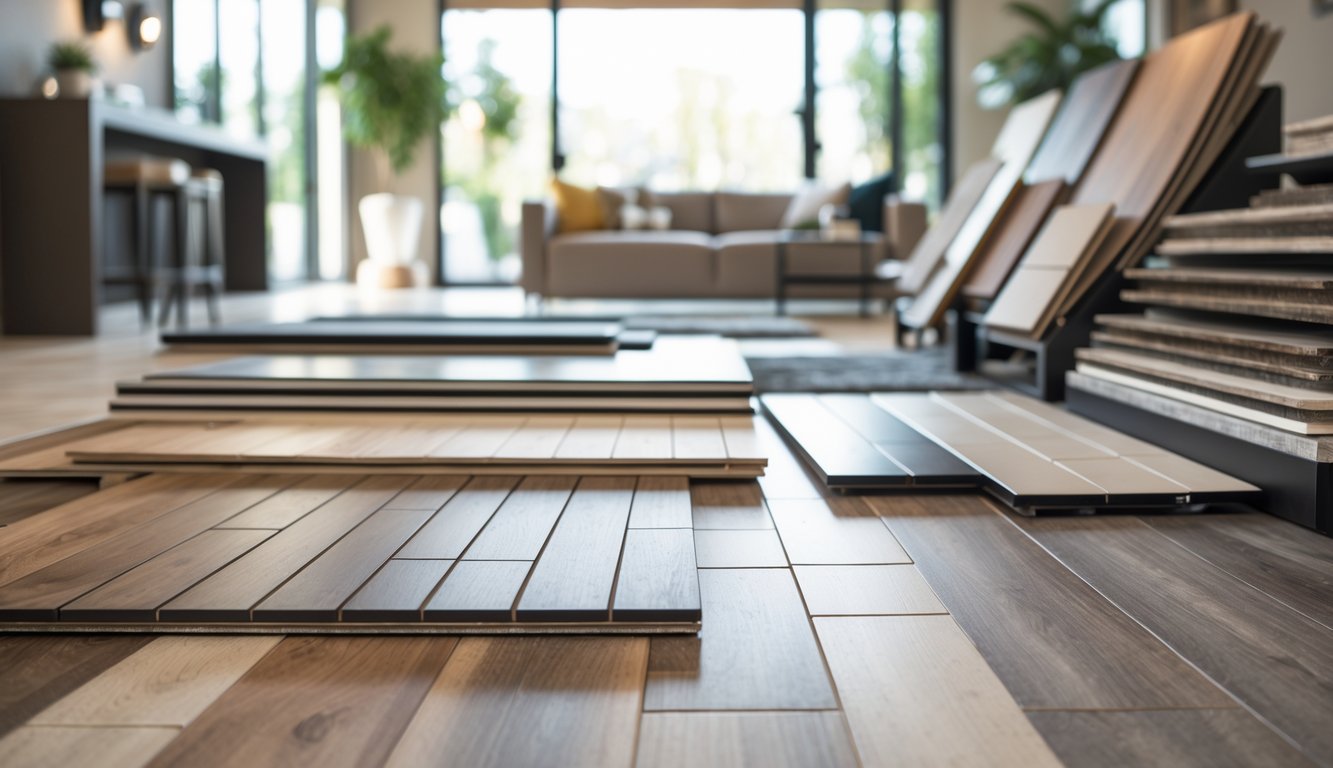
Eco-Friendly and Sustainable Flooring: Good Luck, Honestly
I’ve got stacks of old foam planks outside because, apparently, even “green” flooring can’t escape the supply chain mess. Bamboo? People think it’s everywhere, but nope, mills are still jammed up. It’s like 2021 all over again. Want sustainable flooring—bamboo, cork, linoleum? Prepare to wait months and sign up for email alerts that never come.
Bamboo Flooring
Bamboo grows faster than my neighbor’s weeds (and that’s saying something), so you’d think it’d be everywhere. Bamboo flooring gets hyped as super renewable, technically a grass, and supposedly harder than oak. But try finding engineered bamboo with a legit FSC tag—good luck. I had a supplier tell me a shipment sat six weeks for “VOC compliance checks.” Sure, buddy.
If you want a floor that’s low-maintenance, pest-resistant, and doesn’t make your house smell like a chemical factory, prefinished bamboo’s usually a safe bet. But nobody warns you that strand-woven bamboo is so tough you’ll need diamond-tipped blades. And, weird fact, it bounces dropped tools like a trampoline. Why don’t they put that in the brochure?
Cork and Linoleum Alternatives
You’d expect cork to be easy to get—just peel the bark, right? But now cork flooring is rationed to boutique builders and the price doubles every time someone calls it “eco-luxe.” My friend loves how soft it feels, but my vacuum hates the seams.
Linoleum is not that plasticky stuff in your grandma’s kitchen. Real linoleum is made from linseed oil, wood flour, and pigments—totally biodegradable, static-resistant. But try finding it. I called four stores, only one promised delivery by August, and they blamed “European resin delays.” Sounds fake, but whatever. Some installers mix cork with jute for soundproofing, but honestly, it’s just about whether you can grab enough before a school teacher buys it for her bulletin boards.
Key Features to Stress About During Shortages
Every time I scroll through flooring options—real or online—I feel like I’m in a race I didn’t sign up for. Everyone wants “durable” floors, but nobody talks about the weird edges and random defects you get when inventory’s low. Manufacturers love bragging about scratch resistance, but then you find out the water resistance is, like, barely there.
Durability and Scratch Resistance
First day with a new floor, my dog’s claws scratch it. Awesome. One contractor swears luxury vinyl is indestructible. It’s not. Drag a sofa and you’ll see. LVT is apparently “gaining big,” and the new stuff supposedly scores higher for durability industry analysis here. I only trust durability ratings if they’re for actual commercial use.
Still, I get those annoying white scratches on “scratch-resistant” planks in my own bedroom. Laminate’s better now (AC4 or AC5), but don’t just trust the brand. Always, always do the key test—scratch the sample with your keys, coins, whatever. If it fails in your hand, it’ll fail under your couch.
Water Resistance
If I got paid for every “waterproof” claim that fails in humid weather, I could maybe buy one box of luxury vinyl. People love vinyl because it’s hyped as the fastest-growing flooring category, mostly for water resistance. But not every plank is the same—even in the same box.
Nobody ever asks about radiant heat compatibility, but if your floor buckles because you picked the wrong planks, good luck with insurance. People forget bathrooms aren’t just about “waterproof”—it’s the mildew under the floor that gets you. In busy kitchens and bathrooms, check for real third-party water resistance ratings. LVT is usually safer than engineered hardwood, but “water resistant” is not “floodproof.” Don’t trust the label.
Installation: Why Is This So Hard?
Trying to find floorboards feels like hunting for the last bus at midnight. Then people insist on DIY installs to “save money.” My neighbor’s luxury vinyl planks buckled last spring—total disaster. Everyone forgets how fast costs spiral, especially with radiant heat or engineered wood that needs to “acclimate.” So many hidden gotchas.
DIY vs. Professional Installation
Dropped my rubber mallet again. No clue why I thought this was gonna be a breeze. I skimmed a few “how-to” guides online—every installer seems to moan about undercutting door jambs, but honestly, who actually does it? I didn’t. Result: gaps, everywhere. Family Handyman basically says skipping that step is a crime against floors. My cousin’s installer? Charged her double to fix the mess. Not subtle.
I’ve watched folks dump leveling compound like it’s pancake mix, but if your subfloor’s lumpy, the whole thing creaks or tiles pop. It’s a disaster. Read a forum thread where someone fixed so many mistakes, the “DIY savings” turned into a loss. Also, nobody ever warns you about the exhaustion. Halfway through, I realized I needed knee pads, a working vacuum (dust everywhere, glue doesn’t stick, nightmare), and a better playlist. Radiant floor systems? Not plug-and-play. Installers use these weird circuit testers, and if you don’t, you get cold spots and a “sorry, warranty denied” email.
Installation Cost Factors
Forget the price per square foot. You’ll get the bill, and suddenly it’s doubled—stairs, patterned tile, subfloor repairs, you name it. There’s always some “oops, extra charge” for furniture moving, subfloor leveling, or a moisture barrier. Last month, I asked three contractors for quotes. Not one mentioned a “minimum project fee” up front. But after they started? Suddenly, overtime. Financing looks friendly until you realize that “0% interest” just means you’ll pay twice as much for labor.
My cousin didn’t factor in the radiant heating upcharge. Installers rerouted wires, dragged in a second electrician. One company labeled “baseboard removal” as premium, which feels like a joke. Industry insiders keep saying installation headaches multiply if you skip a professional walk-through. Get it in writing. Moisture issues? You won’t see them until demo day—and then, poof, home warranty void. I waited to paint; someone else painted first and dropped $400 cleaning glue off the walls. Rookie move.